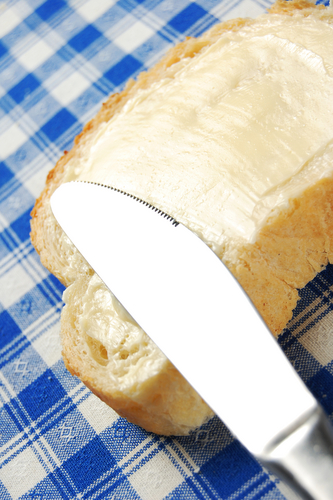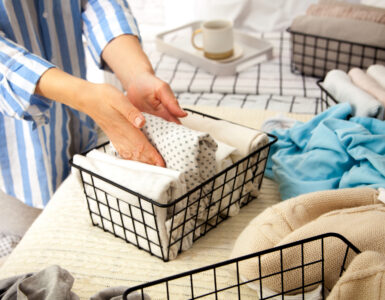Home Made Bread Tips
1. Never let your baking become monotonous. Try a new recipe. Make different sized and shaped loaves and rolls.
2. If your kitchen is cool, set the bowl of dough on a heavy plate over a bowl of warm water. Never let the outside of the dough bowl become more than comfortably warm to the hand.
3. A poor job of kneading the dough before the first rising period cannot be remedied.
4. Never add all the flour the recipe calls for to the dough while it is in the bowl. Save ½ -2 cups of flour, depending on the size of the recipe, to use while kneading the dough on the pastry board.
5. Bread making is a skill and its results depend on the cook’s deftness in mixing, kneading, letting rise and baking.
6. Bread is economical because it gives a high return in food value for what it costs.
7. When bread is doubled in bulk and ready to bake a slight indentation made with the finger will remain.
8. When making wheat bread add 1/8-1/4 teaspoon ginger. It is a yeast improver. (You get more volume from the yeast)
9. When freezing unbaked bread or rolls add 1/3 or ½ more yeast than the recipe calls for. It will hold in the freezer for 2 weeks.
10. When freezing unbaked bread or rolls always shape the dough and put directly in the freezer. Do not allow to rise after it is shaped.
11. Bake large batches of bread. Allow to cool completely then slice (an electric knife works best). Place in plastic bags, gently squeeze the excess air out, twist-tie the bag closed and freeze. It’s ready to use anytime.
FLOUR: The amount of flour needed in each recipe will vary because of its humidity. The quantity mentioned in the recipe is only approximate. The main difference between flours is their protein content.
LIQUID: It is necessary to produce a creamy texture. Milk, water, or potato water may be used. Water is the only liquid in many fine breads such as French and Italian. Bread made with milk is more nutritious, has a browner crust, and will keep longer. Potato water makes a slightly larger loaf, coarser bread. Skim milk powder may be used in place of regular milk to provide more nutrition and convenience.
SUGAR: helps brown the crust and also helps the yeast to work properly. Try granulated, light brown, dark brown or raw sugar interchangeably. Honey and molasses will add moisture and flavor to your bread.
SALT: Salt gives flavor and stabilizes the fermentation. The usual proportion is 1 teaspoon to each 2 cups of flour. Salt retards the growth of yeast.
Shortening: Butter, margarine, shortening, vegetable oil, bacon fat or lard may be used. Butter makes bread tender and gives it a nice flavor.
EGGS: Eggs add flavor, color, and delicacy to yeast doughs. Egg yolks make the finest dough for sweet breads and coffee cakes, but in recipes calling for egg yolks alone, the whole egg can be substituted. Simply use 1 whole egg for each 2 yolks called for. The opposite also holds true. Simply add 2 egg yolks for each 1 egg called for.
BAKING: Bread, when baked and done will be an even rich brown. However, if you are not sure, turn the loaf out of the pan onto a breadboard. Tap the bottom of the loaf lightly with a knuckle. If the bread is done, there will be a distinctly hollow sound. If you do not hear this, turn the bread back into the pan and bake a short time longer.
BE DARING add something new to the dough such as cinnamon and raisins, chocolate chips, dates, parmesan cheese and sautéed garlic and or onions, Orange or Lemon zest, your favorite herbs, ham and cheese your favorite jam or preserves. Roll the dough flat spread with peanut butter and jelly roll it up and bake it.
Bake the bread in different shapes. A loaf (there are hundreds of different size pans), use a casserole dish of any shape, empty cans, form round, square or what ever shape you can think of on a sheet. Use your imagination let it go free.
Brush with egg wash (one egg whisked with 2 tablespoons of water or milk.) Sprinkle with sesame seeds, poppy seeds, herbs, coarse ground pepper or sea salt.
Spritz water into the oven after putting your loaves in to bake for a crustier crust.
A lower (350-degree) oven will give you a thicker crust.















Add comment